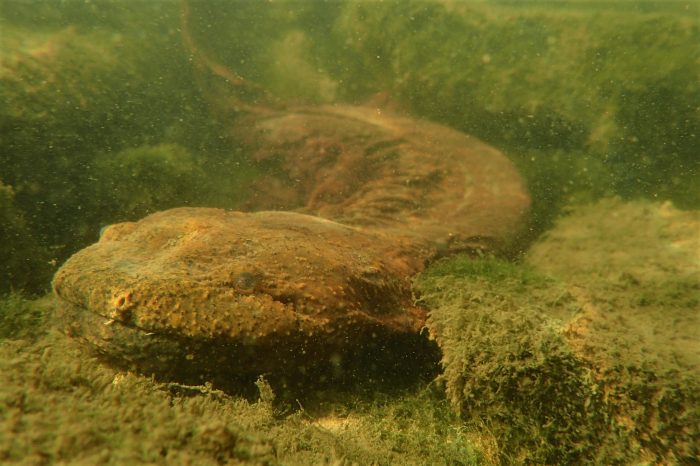
Regulatory Status
In 2018, the U.S. Fish and Wildlife Service reviewed the Eastern Hellbender for potential listing under the Endangered Species Act but determined in April 2019 that the species did not currently merit federal protections. The Hellbender is listed as endangered in Ohio due to historical and continuing declines in population health and habitat. Threats to the persistence of the Hellbender are both natural and anthropogenic and are driven primarily by historical and contemporary habitat conversion and destruction. Due to varying state protections across their range, state agency coordination may be required to complete your project or conduct conservation work. The experienced herpetologists at EnviroScience have federal and state scientific collection permits and are experts at surveying for Hellbenders and their habitats.
Species and Habitat Overview
Eastern Hellbender U.S. Range: IN, OH, PA, NY, MD, WV, VA, KY, TN, NC, SC, AL, MS, AR, MO
Across their range, Eastern Hellbenders occupy a diversity of rivers and streams ranging from cool and clear oligotrophic mountain streams in the Appalachian Mountains to the warmer waters of the Ohio River and its tributaries. In Ohio, Hellbenders are restricted to large rivers and streams in the Ohio River watersheds, including portions of Knox, Columbiana, Jefferson, Belmont, and Scioto Counties. Additional unconfirmed populations have been reported in both Franklin and Washington Counties. In all instances, Hellbenders are found in stream reaches with a high density of large boulders and boulder slabs, often adjacent to steep slopes that serve as a source for larger rocks. Within stream reaches, Hellbenders occupy large boulders or boulder slabs (“shelter” or “den” rocks) where they spend the majority of their lives. During the breeding season (late August-September), reproductive females and some males may be observed moving among shelter rocks in order to breed. It is during this period when Hellbenders are most easily observed, and thus surveys are most easily conducted.
Historically, Hellbenders likely occupied much of the Ohio River and its tributaries in Ohio. Due to the historical loss of forests and conversion of riparian lands to intensive agricultural uses, Hellbenders have not been observed in Ohio River tributaries west of the Scioto River since the early to mid-1900s. By the late 1980s, when the first statewide survey for Hellbenders occurred, the species had been extirpated from much of its range. Declines have continued to result in an estimated 80% decrease in population sizes since the initial surveys.
Conservation Efforts
While contemporary riparian and instream alterations continue to impact Hellbender populations, it seems likely that at least some declines represent the legacy effects of historical anthropogenic modifications. These impacts result in geriatric populations consisting of only large old individuals with no measurable recruitment of larval and juvenile individuals. Since around 2010, the Ohio Division of Wildlife has supported a collaborative effort between state biologists and the Toledo Zoo and Aquarium, Columbus Zoo and Aquarium, and Penta Career Center to rear and release over 1,000 juvenile Hellbenders to bolster extant and repatriate extirpated populations. Read more about this conservation effort from NPR: https://www.npr.org/2017/09/14/545796084/video-snot-otters-get-a-second-chance-in-ohio.
If your project returns the potential occurrence of Eastern Hellbenders, the first step will be for an Ohio Department of Natural Resources Approved Herpetologist to conduct a habitat survey. If suitable habitat is identified, a presence survey and avoidance and minimization plan can be coordinated to assist with timely project approval and completion. EnviroScience herpetologists can also conduct an inventory and monitoring efforts for land managers interested in identifying, researching, or protecting these animals.
For more information on the Eastern Hellbender, assessing its habitat, or presence surveys for your project, please contact one of our Herpetologists, Teal Richards-Dimitrie () or Dr. Nicholas Smeenk ().